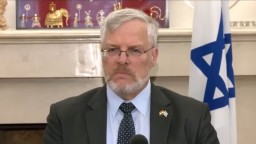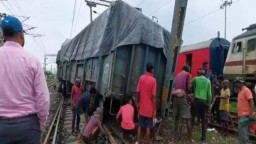Latest News
NaMo ‘Powering' Bharat!

Modi introduced the groundbreaking School Safety Programme - Manu Gupta Social Worker, Co-Founder - SEEDS
As Gujarat CM, Narendra Modi introduced a groundbreaking School Safety Programme, prompted by the tragic loss of students’ lives during a Republic Day parade in Anjar, during the Kutch earthquake in 2001.
Gujarat’s school safety initiative received international acclaim and was adopted by numerous countries and the United Nations. This programme’s primary aim was to bolster schools’ readiness for natural disasters, involving activities such as assessing schools’ vulnerability, integrating disaster preparedness into the curriculum, conducting mock drills and others.
We must give credit to Narendra Modi for this novel safety programme. He himself declared at an event that he would make the School Safety Programme the golden goal of Gujarat and honoured his commitment.
The programme focussed on the vulnerability of individual schools and if any school was found to be on the faultline or in a high seismic zone that endangered it, measures were taken that included training the teachers and students in disaster management protocols so that maximum lives could be saved.
Additionally, mock drills were conducted to ensure no one was stuck at the time of an emergency. Later the same programme was turned into a national programme for the safety of children across the country. A charter was also prepared as Ahmedabad School Safety Agenda which is now considered globally as a good practice manual which the UN replicated in several countries.
CRUSADE AGAINST SICKLE CELL ANEMIA - Dr Yazdi Italia Former Honorary Director, Sickle Cell Anemia Control Program, Gujarat
Narendra Modi and his government in Gujarat was responsible for addressing the issue of sickle cell anemia widely prevalent in the tribal population of the state. This eventually led to the launch of the ‘National Sickle Cell Anaemia Elimination Mission’ in 2023.
The issue was on Modi’s mind from very early. After becoming the PM, he visited the Centre for IPS Cell Research and Application in Kyoto (Japan) in 2014 and interacted with Shinya Yamanaka, a leading stem cell pioneer and winner of the 2012 Nobel Prize on ways to tackle the problem back home in Gujarat and rest of the Indian population wherever it was affecting people.
In those days we were not very clear about how and what of sickle cell anemia. We talked to then CM Modi ji and he gave us a free hand, asking us to do whatever we thought best for the welfare of the people.
We first started an awareness programme through posters, jingles and health camps to inform people what sickle cell was all about and then, since it had a genetic lineage, we also had to take up a mass screening and genetic testing programme to stem its proliferation in future generations. People were given red, yellow and green cards as per their health situation in order of prevalence of the disease and those cards were matched while marriages were planned so that the disease could not be passed on to the progeny.
Modi tied up with a US company way back in 2005-2006 which helped the state health department take suitable initiatives for early screening and stemming of sickle cell anemia. At least 90 lakh tribals were tested and over 31,000 of them were found to have the disease. Modi ji ensured that every hospital in the state, right from the PHCs to civil hospitals, had proper arrangements in place to deal with sickle cell cases.
MODI’S SEMINAL ROLE IN SUCCESS OF RAM RATH YATRA - Anil Jodhani, Gujarat / Mansukh Patel, Former Corporator, Rajkot / Gordhan Zadafia, Former Minister, Gujarat
The Somnath-Ayodhya Ram Rath Yatra proved a milestone in the centuries old struggle for Ram Janmabhoomi movement. The Yatra started on September 25, 1990 from Gujarat’s Somnath under the leadership of BJP stalwart Lal Krishna Advani.
But not many people know about the role of Narendra Modi at that time in making the programme such a panIndia success. Modi was the party’s state organisational general secretary in Gujarat those days. He inspired and united the party workers in large numbers by linking their struggle to the country’s cultural awareness and commitment.
The responsibility of initiating the Yatra successfully from Gujarat was under him. He did all the groundwork of organising the event from scratch. The Yatra travelled through 600 villages of Gujarat and Ram Shila Puja was organised in every village so that people from the entire state could emotionally connect with the concept and the purpose of the whole programme.
Narendra bhai had planned all the routes and itinerary meticulously. He also looked after every need of all those who were a part of the procession and kept record of every news that was published in the papers to analyse the response the rally was getting.
The organisation of the whole Yatra was so efficient and disciplined that it garnered rave reviews in all parts of the country. The procession passed through Gujarat in nine days coinciding with the nine days of Navratri and Modi lived only on water all through the journey of nine days.
The important thing is, he connected all sections of society with the movement, be it saints, or businessmen, women or service class and created an environment that united people for the cause.
The Yatra gave a new direction to the Ram Janmabhoomi movement. Moreover, it catapulted the party into a national party with much broader acceptance. Modi had a big hand in its rise.
COMPILED AND EDITED BY SHASHIKANT SHARMA






.png)
.png)
.png)
.png)
.png)



.jpg)

.jpg)


.png)

